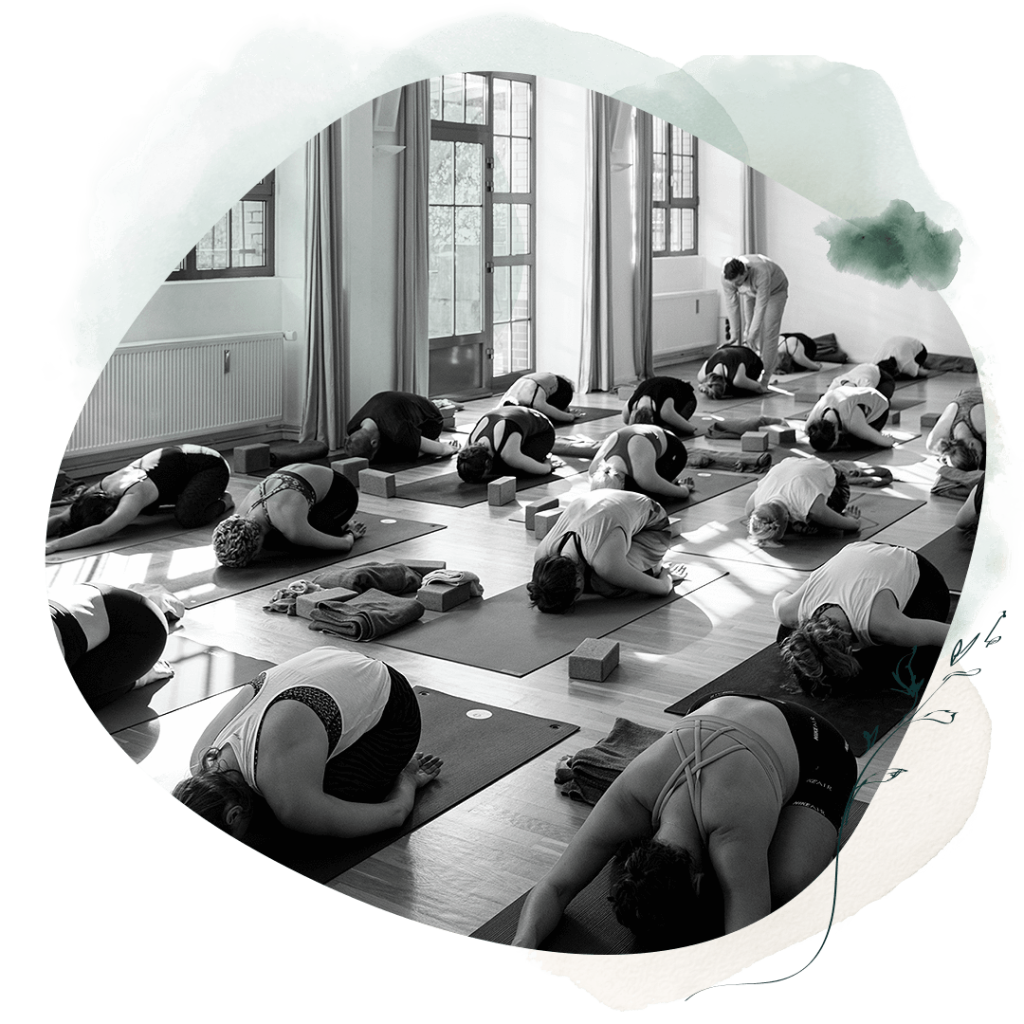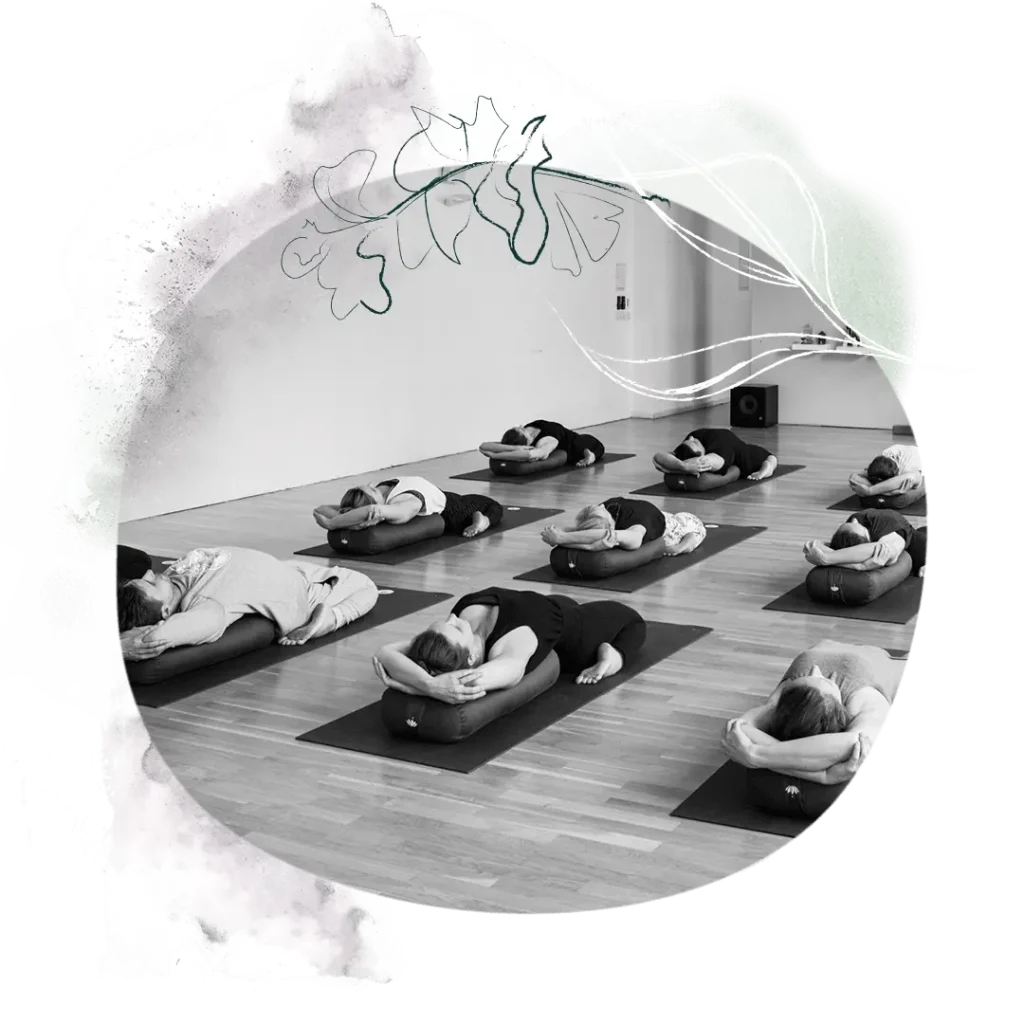Yoga Sutra - what does it mean?
Authored: Moritz Ulrich | Reading time: 5 minutes | last edited: 12/08/2025
The Yoga Sutras of Patanjali are one of the most important writings in yoga philosophy. With their 195 verses, they offer comprehensive guidance on how we can understand and live yoga not just as a physical practice, but as a holistic way of life.
The work is divided into four chapters:
- Samadhi Pada: The theory of mind and the meaning of the state of samadhi.
- Sadhana Pada: The practice, including the famous eight-limbed path.
- Vibhuti Pada: Supernatural abilities that can be developed through yoga.
- Kaivalya Pada: Liberation and the final unity.
The eight-limbed path (Ashtanga Yoga), which is described in the second chapter, is particularly well known. This article is primarily dedicated to this part, as it is still one of the central pillars of modern yoga today.
In the Jivamukti Yoga we refer to important yoga scriptures such as the Yoga Sutras in every class. One of the 5 pillars of this method is "Shastra" - the study of the scriptures. By integrating this wisdom into our practice, we create a bridge between philosophy and everyday life.
The most important facts in brief - Yoga Sutra summary
- Timeless teaching: The Yoga Sutras of Patanjali consist of 195 verses and 4 chapters that offer a holistic guide for body, mind and soul. They are a central foundation of modern yoga and still act as a compass for personal growth today.
- Eight-link path: The centrepiece of the sutras is the famous Ashtanga path with eight stages, from yamas and niyamas to samadhi. These stages are not a rigid sequence, but interlock with each other to promote holistic development.
- Relevance in everyday life: Principles such as ahimsa (non-violence) can be easily implemented through veganism or consideration for others. Jivamukti Yoga combines philosophy and asana practice so that the wisdom of the sutras comes to life and has an effect beyond the mat.

The Yoga Sutras of Patanjali - an overview
Definition: What are the Yoga Sutras?
The Yoga Sutras are a fundamental text of the Yoga and offer clear guidance on how we can develop physically, mentally and spiritually. Although their origins are not fully understood, they are regarded as timeless wisdom that still gives us guidance today.
With their 195 verses, the sutras cover a wide range of topics - from controlling the mind to liberation from the cycle of birth and death. They are a compass that helps us to discover our inner potential.
The 8 stages of yoga (Ashtanga Yoga)
The eight-limbed path is one of the best-known teachings of the Yoga Sutras. It describes the steps that can lead us to a state of complete harmony:
- Yama: Dealing with others, e.g. ahimsa (non-violence) and satya (truthfulness). Ahimsa is compassion towards other living beings - a simple way to live ahimsa is veganism.
- Niyama: Self-discipline, e.g. santosha (contentment) and tapas (discipline).
- Asana: Physical posture that should be stable and joyful.
- Pranayama: Breath control - directing and releasing life energy.
- Pratyahara: Withdrawal of the senses to look inwards.
- Dharana: Concentration on an object or a point.
- Dhyana: Meditation - the uninterrupted flow of attention.
- Samadhi: Merging with the object of concentration, a state of complete unity.
The stages are not a strict sequence, but are often interlinked. For example, meditation (dhyana) can help you to live the principles of the yamas more consciously.
Why are the Yoga Sutras still relevant today?
Relevance for modern yoga practice
The Yoga Sutras provide us with tools to deal with the challenges of modern life. They help us to become more mindful, reflect on our actions and live more consciously.
One example is ahimsa, non-violence. In a world that is often characterised by conflict, this principle reminds us to act with compassion and consideration. Veganism is a simple way of practising ahimsa in everyday life by sparing other living beings suffering.
Integration into everyday life
- Ahimsa (non-violence): Standing up for the needs of other living beings.
- Santosha (satisfaction): Acceptance and gratitude for what is.
- Pratyahara: To consciously withdraw from external stimuli in order to find inner peace.
The Yoga Sutras show that yoga doesn't just take place on the mat, but in every moment of our lives.
Yoga sutras taught by Moritz Ulrich
How Moritz Ulrich teaches the Yoga Sutras
In Jivamukti Yoga, the Yoga Sutras and other important scriptures take centre stage. In my classes, I combine their philosophy with asana practice to create a holistic experience. Asanas are not just physical exercises, but an expression of our relationship to the earth and to all living beings.
Courses and workshops at Peace Yoga Berlin
Whether in open classes or special Workshops - At Peace Yoga Berlin you have the opportunity to experience the principles of the Yoga Sutras in depth. Together we will explore how they can enrich your practice and your life.
Frequently asked questions about the Yoga Sutras
Can I understand the Yoga Sutras without practising yoga physically?
Yes, the sutras are a philosophical foundation that is inspiring regardless of the physical practice.
How long does it take to implement the principles of the sutras?
That is individual. Some principles can be implemented immediately, others require a lifelong endeavour.
Are there differences between the philosophy of Jivamukti Yoga and the Yoga Sutras?
Jivamukti Yoga integrates the wisdom of the sutras into a holistic method that combines philosophy, asanas, meditation and music. The method attempts to bring theory to life.
Conclusion: Yoga Sutras - a bridge between philosophy and practice
The Yoga Sutras of Patanjali are far more than just a text. They are an invitation to discover the depth of yoga and to experience the connection between body, mind and soul. In Jivamukti Yoga, we take up this invitation in every class by bringing the wisdom of the sutras to life.
Peace Yoga in Berlin
Experience the timeless wisdom of the Yoga Sutras at Peace Yoga Berlin. Sign up now for our trial offer and immerse yourself in the fascinating combination of asana practice and philosophy.


